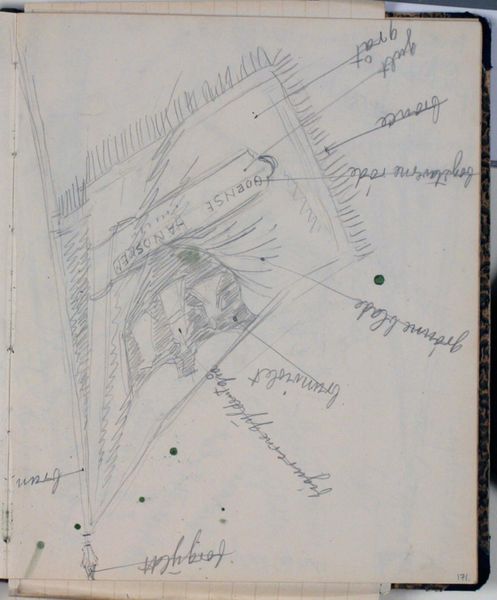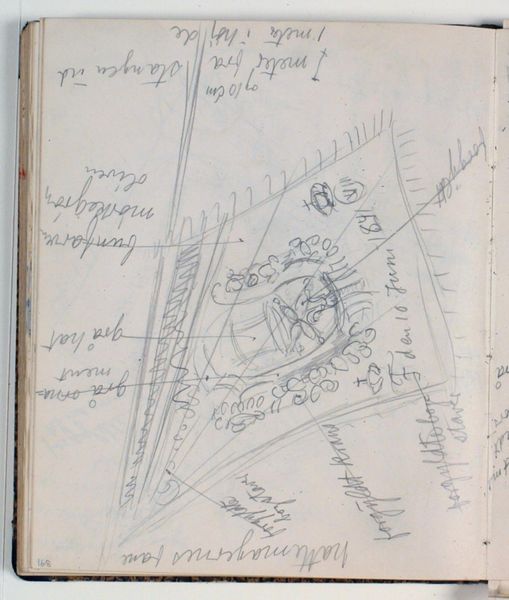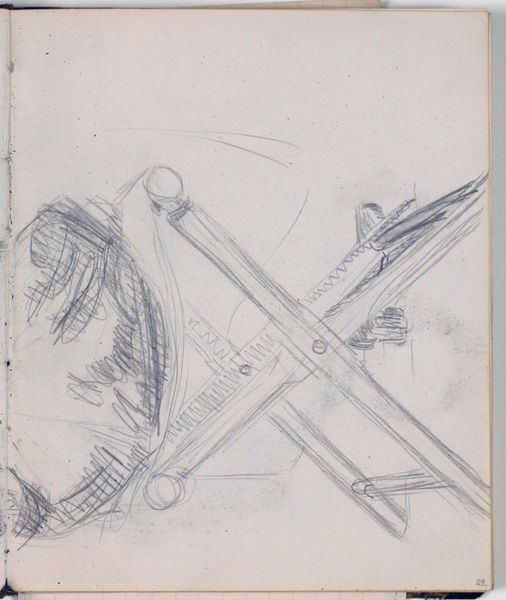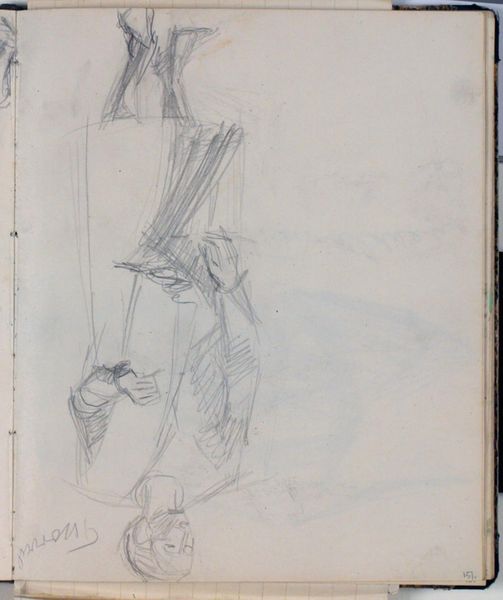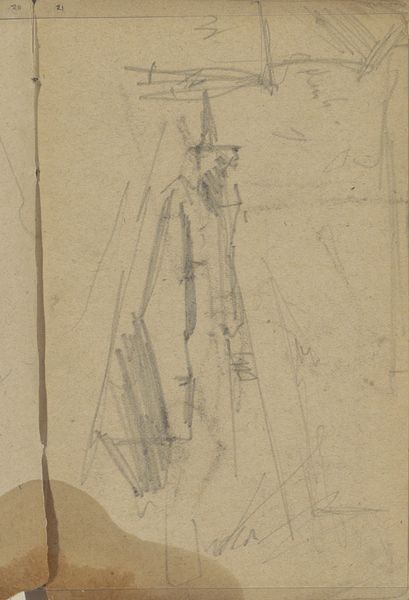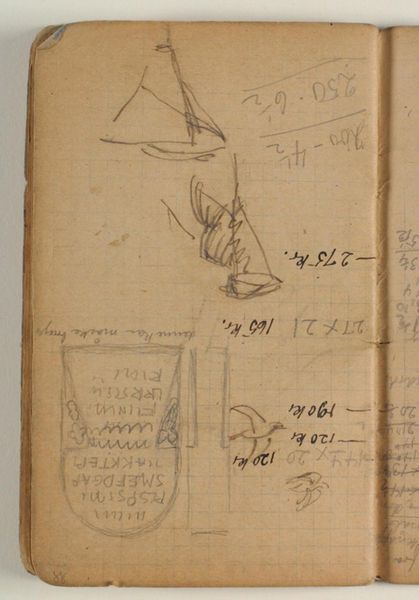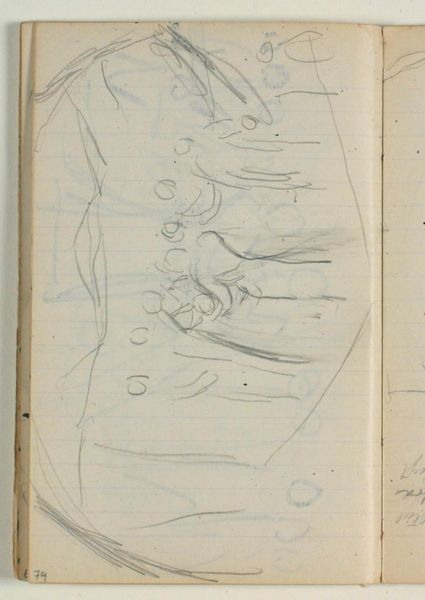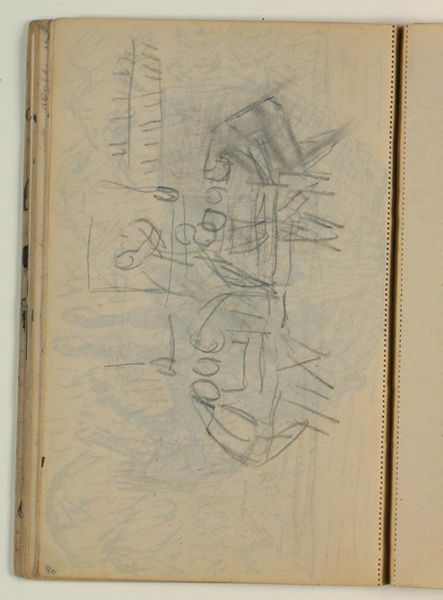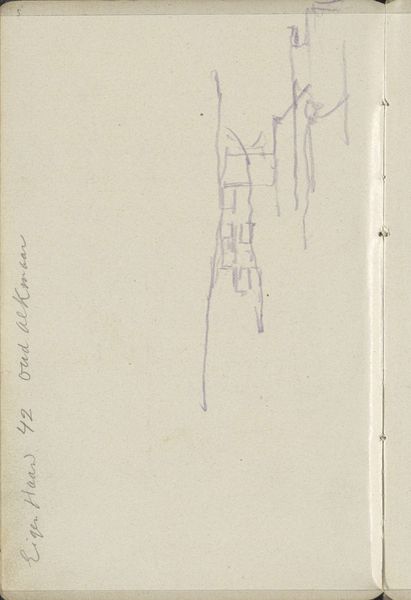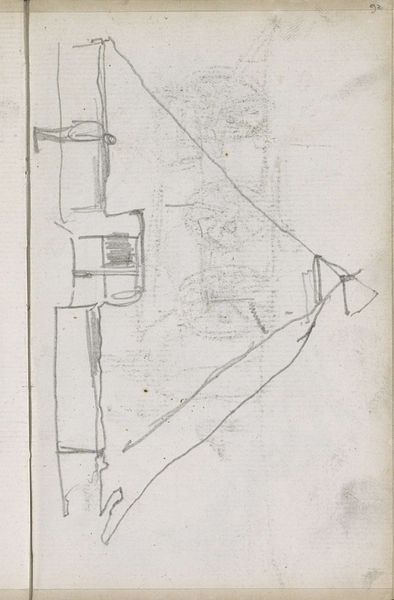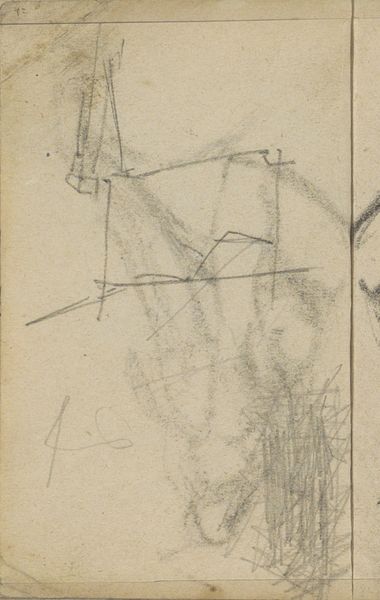
Studie af garverlaugets fane. Farveangivelser 1930 - 1936
0:00
0:00
drawing, pencil
#
drawing
#
pen sketch
#
pencil
#
modernism
Dimensions: 226 mm (height) x 185 mm (width) x 112 mm (depth) (monteringsmaal), 221 mm (height) x 184 mm (width) (bladmaal)
Curator: We are looking at a preliminary drawing by Niels Larsen Stevns, dating from sometime between 1930 and 1936, titled "Studie af garverlaugets fane. Farveangivelser" which translates to "Study of the tanners' guild flag. Color indications". It’s currently part of the collection at the SMK, the National Gallery of Denmark. What strikes you first? Editor: Its simplicity, it seems so… tentative, unfinished. Like a fleeting thought captured quickly on paper. I'm struck by how raw it feels. You can almost see the artist sketching, figuring out the composition and color palette in real-time. I imagine the Guild, with all its power dynamics…and here we have a humble study. Curator: It is a sketch, a preparatory piece. Stevns was likely commissioned to design or perhaps reproduce the Guild’s flag. The annotations surrounding the sketch denote the colors he was considering: "guld" for gold, "grå silke" for gray silk, "rød" or "rod" for red. This gives us insight into the craftsmanship involved in these historical artifacts. What might a guild flag from that time have symbolized? Editor: A flag represents authority and a sense of belonging, obviously. Guild flags specifically highlighted the skills, craftsmanship, and legacy of these craftsmen and merchants who gathered around certain professions. I find myself wondering about labor conditions, gender, and how inclusive those guilds actually were back then. Who actually got to design these things? Whose stories got to be on the flag? Curator: It brings to mind questions about representation and power structures, certainly. Think of the tanners themselves and their societal position; guilds provided protection and structure within a community, although that came at the expense of those excluded. Consider the tradition, the very public display of such a banner. What kind of imagery and message were they promoting? Editor: And whose labor created the leather? What did the silken details really cost? It's all there in this seemingly simple sketch if you just scratch the surface. This piece speaks of its time. Perhaps it would benefit the viewer to explore the wider historical context, including workers rights, colonialization, and trade that went into the making of even the raw materials for that very banner. Curator: I agree. Viewing this "study" as a fragment of social and political history encourages viewers to contemplate broader power dynamics that framed these representations and symbols within craft traditions. Editor: Absolutely, approaching art through the multiple narratives within them, including gender and race, means opening the space for discussion. A conversation where even the history of something like a flag raises contemporary critical issues.
Comments
No comments
Be the first to comment and join the conversation on the ultimate creative platform.

